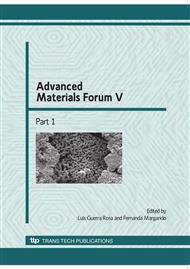p.184
p.192
p.198
p.206
p.214
p.220
p.226
p.233
p.239
Glass/Polyvinyl Chloride Composites
Abstract:
This paper summarizes the results obtained in the use of plastisols of vinyl chloride homopolymer (PVC), obtained by the process of emulsion polymerization, as thermoplastic matrix in the production of composite pipes and in pipe repairing. Two processing techniques commonly used with thermosetting matrices were studied: filament winding and hand lay up. The produced composite structures of PVC reinforced with glass fibres were subsequently subjected to tests in order to determine their mechanical properties. This paper concludes that it is possible to use the described technique for piping repairing with good results.
Info:
Periodical:
Pages:
214-219
Citation:
Online since:
January 2010
Price:
Сopyright:
© 2010 Trans Tech Publications Ltd. All Rights Reserved
Share:
Citation:


